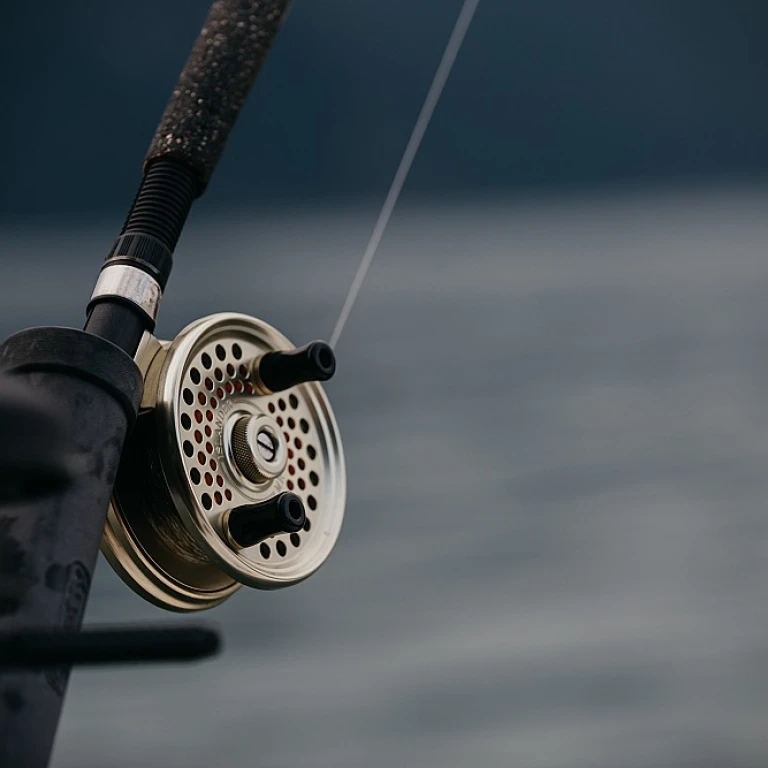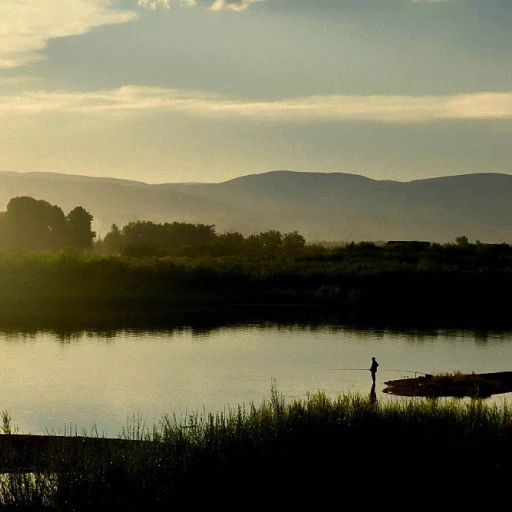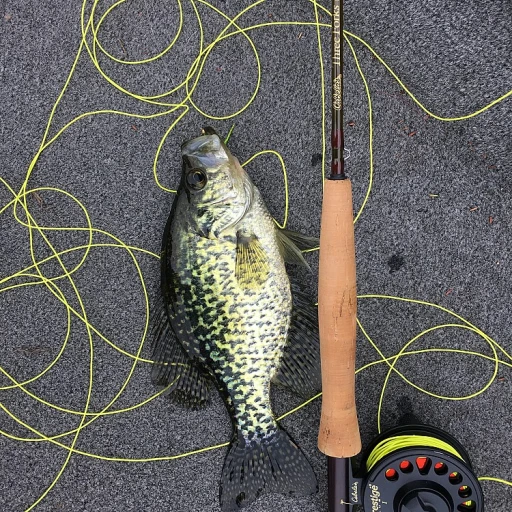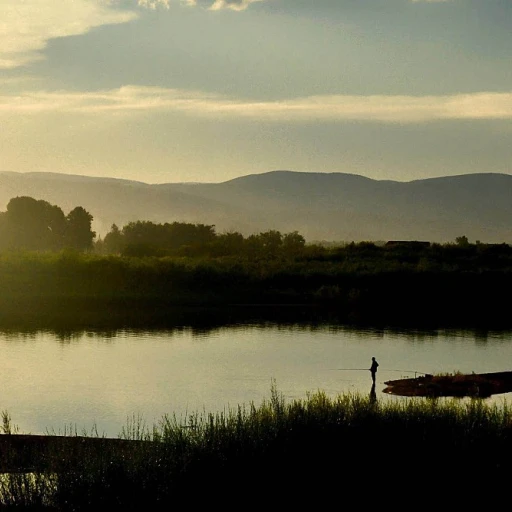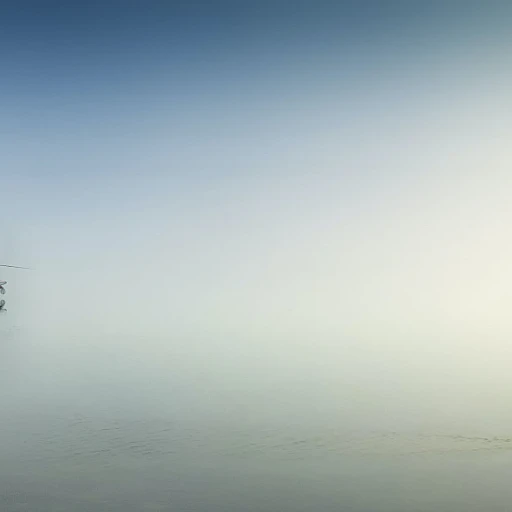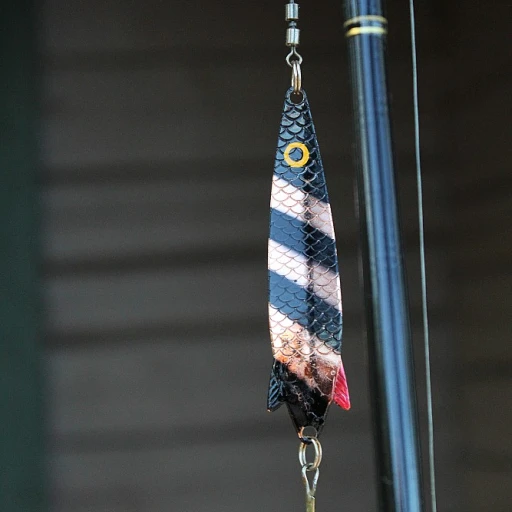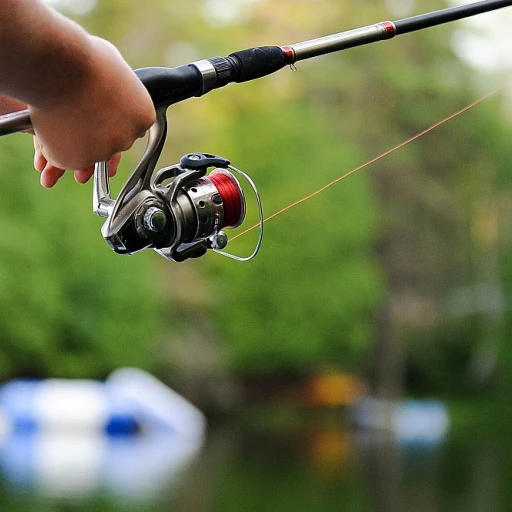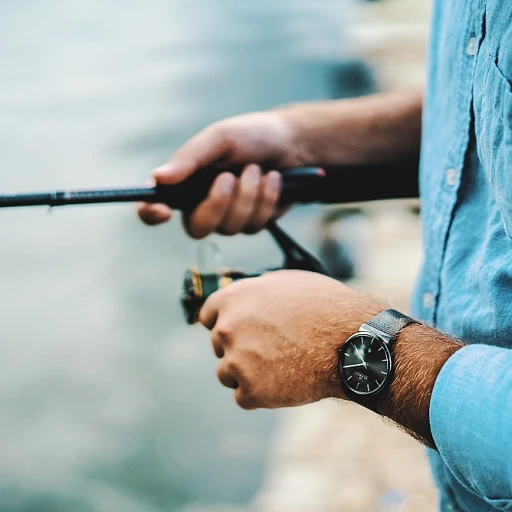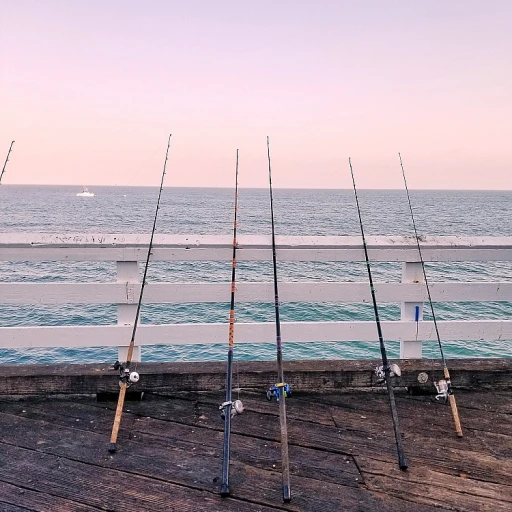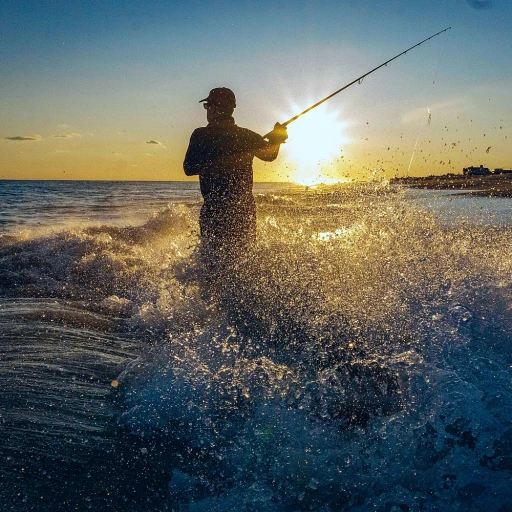Understanding lake bass: species and behavior
Species and behavior of lake bass
Understanding the species and behavior of lake bass is crucial if you want to make the most out of your fishing trip. In lakes across Texas and other regions in the U.S., you mostly encounter species like the largemouth bass, Micropterus salmoides, and the smallmouth bass, Micropterus dolomieu. The largemouth is particularly popular among anglers for its size and fighting spirit.
A typical largemouth bass can weigh from 1 to 5 pounds, but they can grow much larger. Gene Gilliland, a renowned bass fishing expert, notes that these fish commonly thrive in warmer waters, making them suitable for regions with hotter climates like Texas (source: Bassmaster).
Behavior patterns
Bass are sight predators and tend to be more active during dawn and dusk. During the spawning season, which usually falls between April and June, bass can be seen in the shallower parts of the lake. They become particularly aggressive and territorial, making this an ideal time for fishing enthusiasts.
However, these fish are pretty versatile. During summer, bass tend to move deeper due to the heat, while in winter, they slow down their activity and metabolism. As the saying in the fishing community goes, “In the winter, go slow, slow-moving baits like jigs can still attract a winter bass.”
Typical habitats
In Texas, lakes like Lake Travis and other popular spots provide an ideal environment for lake bass. You’ll often find them near structures like submerged logs, rocks, and vegetation, where they can ambush prey. The Texas Parks and Wildlife Department mentions that ramps, docks, and boat fishing all offer strategic points for catching these species.
If you're all set to head out, remember to keep their behaviors and habitats in mind. Equipped with this knowledge, you'll be all set to cast your line at the right place and the right time for your fishing adventures.
For more tips on timing your fishing trip, check out this finding the best time to fish guide.
Best lakes for bass fishing in Texas
Top spots in Texas: where to cast your line for lake bass
Texas ain't just about barbecue and cowboy boots. It's also a mecca for lake bass fishing. If you're serious about catching that trophy bass, you gotta know the top spots in the Lone Star State. With a good mix of warmth, water, and nutrient-filled lakes, Texas offers some prime bass fishing destinations all year round.
Lake Fork - the heavyweight champ
If you're talking big bass, Lake Fork should be the first words outta your mouth. Located about 65 miles east of Dallas, this lake is stocked to the gills with largemouth bass. According to Texas Parks and Wildlife, Lake Fork boasts about 70% of the 50 biggest bass caught in Texas. That's saying something! Ready for some stats? The current largemouth bass record here is a whopping 18.18 pounds.
Lake O.H. Ivie - a rising star
While maybe not as famous as Lake Fork, Lake O.H. Ivie is making a name for itself. This 19,000-acre reservoir has been pumping out significant catches lately. In the colder months of 2021, several bass over 13 pounds were caught and recorded. Due to its relatively remote location, it’s a goldmine for those willing to make the trek.
Lake Conroe - non-stop action
A short drive north of Houston, Lake Conroe is another hot spot. Known for its great facilities and easy access, this lake sees heavy fishing pressure. Still, it produces large bass all year. Local tournaments often cite this lake as a go-to for reliable fishing. The lake’s deep waters and structure provide ample hiding spots for those hefty bass.
Sam Rayburn Reservoir - the tournament king
Sam Rayburn, located in deep East Texas, is one of the most heavily fished reservoirs in the entire U.S. It's no accident that it’s a frequent site for national bass tournaments. With water spreading over 114,000 acres, this lake provides a diverse habitat for both largemouth and smallmouth bass. Anglers frequently haul in bass here in the 5- to 8-pound range. Now that sounds like a sweet spot, huh?
Lake Amistad - the dream destination
For those wanting a blend of stunning scenery and excellent bass fishing, Lake Amistad on the U.S.-Mexico border is unbeatable. Its crystal-clear waters and hidden underwater structures make it perfect for bass fishing. It’s an angler’s dream with plenty of shoreline access, meaning it can cater to those without a boat as well. Tips from seasoned anglers suggest that winter is a particularly good time to hit Amistad for bass.
Lake Travis - the all-rounder
Just northwest of Austin, Lake Travis offers a mixed bag in terms of fishing. While primarily known for recreational activities, the lake's fluctuating water levels create unique bass fishing opportunities. Local anglers say that boat docks and submerged brush piles are prime areas for finding largemouth bass here, especially in the spring. Don't forget your fishing license as Texas Parks and Wildlife enforce it strictly!
This isn’t an exhaustive list, but surely it’s enough to get your gears turning and your rods ready. Always check current fishing conditions and regulations for each lake, as they can change year to year. With these lakes on your radar, your next fishing trip in Texas is bound to be a success!
Essential gear for lake bass fishing
Rods, reels, and line - your basic essentials
When you're gearing up for lake bass fishing, having the right equipment can make all the difference in your success and enjoyment of the sport.
Rods: A medium-heavy baitcasting rod with a fast action tip is a favorite among bass anglers, as it offers the right balance between power and sensitivity. According to pro angler Kevin VanDam, fine-tuning your setup based on water conditions and the expected size of the bass is crucial. He recommends starting with a 7-foot rod to give you a good balance of casting distance and control.
Reels: Pairing your rod with an effective reel is key. Baitcasting reels with a high-speed gear ratio (7:1 or higher) are preferred for fast retrieves, especially useful when bass are actively feeding. Spinning reels, on the other hand, are more suited for finesse techniques and lighter lures. Remember to adjust your drag system accordingly to ensure you don't lose a big one!
Line: The choice of fishing line can be overwhelming, but for lake bass fishing, a braided line with high strength and low stretch (like 30-50 lb test) is excellent for casting and handling bass in heavier cover. Fluorocarbon lines (12-20 lb test) are also popular due to their low visibility in clear water and higher sensitivity to bites.
Lures, baits, and tackle box must-haves
If you want to catch lake bass, the right lure can be your best ally. Here are a few lures that no bass fisherman should be without:
- Crankbaits: These are ideal for mimicking the movement of baitfish and can be very effective in covering a lot of water quickly. Look for ones that match the forage in the lake you’re fishing in.
- Jigs: Perfect for slow-moving presentations and getting to the bottom where big bass often lurk. Add a soft plastic trailer to multiple the attraction.
- Spinnerbaits: Great for targeting bass in various water columns. Their flash and vibration are irresistible to largemouth bass.
- Soft Plastics: Options like worms, creature baits, and flukes are versatile and can be fished in numerous ways including Texas and Carolina rigs.
Don’t forget to stock up on hooks and weights. For example, having a selection of different types of hooks like offset worm hooks, circle hooks, and swimbait hooks will prepare you for different situations. Tungsten weights are pricier but offer better sensitivity and a smaller profile compared to lead.
Additional gear to enhance your fishing experience
Besides your rod, reel, and tackle box, there are a few more items that can make your time on the water more enjoyable and successful.
- Fish Finder: Modern fish finders offer invaluable information on the depth, structure, and presence of fish beneath your boat. Read our article on microskiffs to see why they’re becoming popular among anglers.
- Polarized Sunglasses: These reduce glare off the water, making it easier to spot fish and structure below the surface.
- Plenty of Storage: Having a well-organized storage system on your boat or in your bag makes it quicker to switch out baits and stay efficient while fishing.
- Fishing License: In Texas, make sure you have your fishing license and are aware of any regulations. Nothing spoils a day on the lake like a fine from a game warden!
Now that you’re armed with the essential gear, it's only a matter of time until you land that trophy bass. Whether you’re fishing in the summer heat or during the cold months of winter, having these tools at your disposal will help you adapt to any situation. For more details on finding the best lakes for bass fishing in Texas, head over to our post on best fishing times.
Seasonal tips: fishing for lake bass year-round
The importance of seasonal behavior
Understanding when and where to cast your line can be crucial for a successful lake bass fishing trip. The behavior of lake bass changes with the seasons, and knowing these patterns can make a huge difference.
Spring: it’s all about the spawn
Spring is a prime time for bass fishing, as largemouth bass are actively spawning. They move towards shallow waters, making them easier to catch. According to a report by the Texas Parks and Wildlife Department, bass are most active during spawning season. You’ll find them in coves and near shoreline vegetation. Using slow-moving lures like jigs can be particularly effective.
Summer: deeper waters and early mornings
Summer can be challenging due to the heat, but it’s not impossible to catch bass. With the water heating up, bass tend to move to deeper, cooler areas during the day. Early mornings or late evenings are the best times to fish, when the water is cooler and bass are more active. Experts like pro angler Kevin VanDam suggest using crankbaits or jerkbaits to reach deeper waters.
Fall: a time of transition
Fall is another great season for bass fishing as the water temperatures start to drop. Bass begin to feed aggressively to prepare for winter, making this an excellent time to be out on the lake. They move closer to shallow waters again, and using topwater lures can yield fantastic results. A study published in the Journal of Fisheries Research indicates that bass are more likely to chase after faster-moving baits during this time.
Winter: slow and steady wins the race
Winter can be the most challenging season due to lower temperatures, causing bass to become sluggish and less likely to chase fast-moving baits. You’ll need to slow down your approach. Using soft plastics like worms and dragging them slowly along the bottom can still bring in some good-sized bass. According to a survey from Bassmaster Magazine, winter fishing requires patience, but it rewards those who are persistent.
For a more detailed guide on the best fishing times and tips, you can check out this resource.
Techniques for catching largemouth bass
Perfecting the art of largemouth bass fishing
So, you've got your gear ready and your favorite spot on Lake Travis picked out. Now, let's dive into the crux of it all - the techniques that actually get lake bass biting. One popular method is the 'Texas Rig,' which many anglers swear by. Expert angler, Kevin VanDam, once said, "The Texas Rig is versatile and perfect for those thick, weedy areas where bass love to hide." Start with a bullet weight threaded onto your line, followed by a hook tied with a knot. Insert the hook into the top of a soft plastic worm, exit about a quarter inch down, then reinsert the hook point back into the worm, leaving it weedless. Another effective technique is the 'Carolina Rig.' This one works great for offshore fishing when bass tend to stay in deeper, cooler water during the hot summer months. It involves a weight followed by a swivel, then a leader line down to a hook with soft bait. Patrick Walters, another bass fishing aficionado, mentions, "The Carolina Rig is my go-to when the fish are finicky and want something subtle and slow-moving." Don't overlook the 'Drop Shot' method either. When bass are hovering just off the bottom, this technique can be killer. Attach a weight to the end of your line, and tie a hook about 12-18 inches above it. Your bait will hang freely above the weight, making it appear like an easy target for hungry bass.Leveraging the seasons for optimal catches
Fishing for lake bass is a bit of a chess match; you've got to know their moves and adjust your strategy. For instance, during the winter, bass tend to gather in deeper parts of the lake and move less frequently. This is a good time to use slower techniques like the 'Jig and Pig' combo. Come springtime, especially around April, fish move to shallower waters for spawning. You'll notice largemouth bass becoming more aggressive, making faster lures like the 'Spinnerbait' effective for getting their attention. In the summer, as the water warms up, bass will again seek out deeper, cooler spots, often around underwater structures. Fast-moving lures like 'Crankbaits' can excite them into striking. Late summer evenings can also prove fruitful, with frog baits on the surface being a thrilling way to catch those big boys. Autumn is also a fantastic time of year. Bass start feeding aggressively again before the winter chill sets in. This is a prime time for 'Topwater Baits' early in the morning or late in the afternoon.Tools of the trade - technology to enhance your catch
GPS and fish-finding sonar devices are indispensable tools for modern anglers. Devices like 'Humminbird Helix 12' provide real-time data, showing you exactly where fish are hiding, which structure they prefer, and even giving water temperature readings. Phone apps can be lifesavers on a fishing trip too. Apps like 'BassForecast' and 'FishBrain' offer weather forecasting, moon phase stats, and even crowdsourced fishing hot spots, giving you that extra edge. Remember, while these methods and gadgets can seriously up your game, nothing beats spending time on the water and getting to know your favorite bass lake intimately. And most importantly, always have fun and respect nature while you fish. For more information on improving your lake bass fishing techniques, you might find this article on finding the best fishing times helpful: find the best fishing times today.Planning your fishing trip: licenses and regulations
Fishing licenses - don’t forget them!
So, you’ve finally got your gear sorted, and your fishing trip planned to the minutest detail. But don’t forget the most essential thing – your fishing license! In Texas, you need a fishing license to fish in public waters, and failing to have one can land you in hot water. According to Texas Parks and Wildlife Department (TPWD), over 35% of citations issued in 2022 were due to anglers not having a valid fishing license.
Regulations to keep you out of trouble
Just like a driver’s license, a fishing license has its set of rules. In Texas, one must adhere to the bag and size limits for lake bass to ensure the sustainability of the species. For largemouth bass, a presentable limit in most water bodies is five fish per day with a minimum length of 14 inches. Always double-check with TPWD for specific regulations regarding the lake you’re fishing in—a helpful tip: try their app for quick access to the latest information.
Where to get your fishing license
Getting a fishing license in Texas is a breeze. Whether you prefer to do it online, in person at a licensed retailer, or through the TPWD website, the process is straightforward. An annual freshwater fishing license for a resident is currently priced at $30, which is considered affordable given the extensive opportunities fishing in Texas provides.
Helpful tips for a smooth fishing trip
Before you head out, make sure to pack your fishing license along with your tackle box. Keep a digital copy on your phone, use an app like FishBrain for managing your documents, and be aware of the bag and size limits. Remember, the game wardens aren’t out to ruin your fun—they’re enforcing rules to protect this cherished pastime and make sure bass remain plentiful.
Lastly, consider the timing of your trip. As covered earlier in the article, the best time to fish can have a significant impact on your success. And, as always, have fun and respect the water. Happy fishing!
Using technology: apps and tools for bass fishing
Stay ahead with mobile apps
In today's bass fishing world, using technology can dramatically improve your chances of success. Mobile apps like Fishbrain and Angler offer a wealth of information right at your fingertips. These apps can help you track hotspots, get real-time weather updates, and even share your catches with fellow anglers. According to a 2021 Statista report, Fishbrain held the top spot globally with an impressive 10 million users.
Utilizing GPS and sonar
Modern GPS and sonar technologies have revolutionized bass fishing. Devices like the Garmin Striker 4 offer detailed mapping and fish-finding features that can pinpoint where bass are hiding. A study by the University of Minnesota showed that anglers who use sonar catch fish 30% more often than those who don’t.
Fishing forums and communities
Online forums and communities like BassResource and Texaskayakfisherman are treasure troves of information and provide a platform to learn from seasoned anglers. Experts like Hank Parker often share tips and tricks either through blogs, forums, or online videos. These platforms also offer advice on local regulations and the best times to fish, which can be invaluable when planning your trips.
Social media for real-time advice
Don’t underestimate the value of social media for real-time advice and updates. Facebook groups dedicated to bass fishing or following popular anglers & influencers on Instagram and YouTube can offer timely info and community support. For instance, Bill Dance’s YouTube channel has over 500,000 subscribers, providing tips that have been tried and tested over the years.
Weather tracking for optimal fishing times
Specialized weather tracking apps like Weather Underground and Windy can be crucial. Accurate weather forecasting enables you to know when conditions are ideal for fishing. We all know bass are more active during certain weather conditions, so these tools can significantly improve your fishing expeditions.
Personal stories and expert insights
Personal tales from the water
You wouldn't believe the magic of bass fishing until you've heard it straight from the anglers who've been there. Take Jack Simons, a seasoned angler from Texas, who shared his experience with a 13-pound largemouth bass caught on Lake Travis during a chilly winter morning. He swears by slow-moving jerkbaits and insists, 'It's all about patience and knowing your spot on the lake.'
Another angler, Lisa Thompson, reminisces about a summer day on Bass Lake, when she and her family netted an impressive haul of bass. 'We fished offshore, near the drop-offs.' she recalls, 'and the key was finding the right time water - early mornings or late evenings worked best for us.'
Expert insights
If you're serious about catching big bass, heed the advice of experts like Dr. Jason Franklin, notable for his extensive research on bass behavior. Dr. Franklin emphasizes, 'The largemouth bass is a creature of habit. They are most active during spawning season and slow down in colder months. Understanding their patterns is crucial.'
Meanwhile, Texas Parks and Wildlife biologist, Sarah White, explores seasonal tips and states, 'In summer, bass tend to move into deeper waters. Investing in a good fish finder can help locate them. In winter, they stay near structure, so fish slow and stay patient.'
Don't forget to keep an eye on government websites like Texas Parks & Wildlife for updates on fishing regulations and permits. It's your gateway to a hassle-free fishing trip throughout the year.
Community and controversies
Lake bass fishing isn't just about the catch, it's about the community. Events like the annual Largemouth Bass Tournament bring anglers together from all over, but they also spark debates on ethical fishing practices. Some argue for strict catch-and-release policies to sustain the bass population, while others feel regulations need more flexibility.
Regardless of where you stand, one thing's for sure - the love for bass fishing brings people together. So grab your fishing license, pack your gear, and hit the lakes. There's always a new tale waiting to be told.

